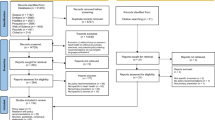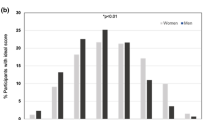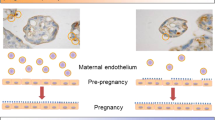Abstract
Cardiovascular disease remains the leading cause of death worldwide. Cardiovascular research has therefore never been more crucial. Cardiovascular researchers must be provided with a research environment that enables them to perform at their highest level, maximizing their opportunities to work effectively with key stakeholders to address this global issue. At present, cardiovascular researchers face a range of challenges and barriers, including a decline in funding, job insecurity and a lack of diversity at senior leadership levels. Indeed, many cardiovascular researchers, particularly women, have considered leaving the sector, highlighting a crucial need to develop strategies to support and retain researchers working in the cardiovascular field. In this Roadmap article, we present solutions to problems relevant to cardiovascular researchers worldwide that are broadly classified across three key areas: capacity building, research funding and fostering diversity and equity. This Roadmap provides opportunities for research institutions, as well as governments and funding bodies, to implement changes from policy to practice, to address the most important factors restricting the career progression of cardiovascular researchers.
Key points
-
Diversity is key to innovation, but the current system and culture of the cardiovascular research sector are driving researchers, particularly those from under-represented groups, out of the sector.
-
Our team conducted research to identify the key short-term, medium-term and long-term solutions to addressing issues faced by early-career and mid-career researchers, focusing on three key areas: capacity building, research funding and fostering diversity and equity.
-
Capacity building needs to support collaboration and team-based research, improve and incentivize mentorship, and provide training to cardiovascular researchers to develop management, financial and communication skills.
-
Research funding needs to be used to improve job security and the assessment of career disruptions and opportunities and to support early-career and mid-career cardiovascular researchers to prepare for leadership roles.
-
To improve diversity and equity in cardiovascular research, working parents, women and individuals from other under-represented groups need additional support.
This is a preview of subscription content, access via your institution
Access options
Access Nature and 54 other Nature Portfolio journals
Get Nature+, our best-value online-access subscription
$32.99 / 30 days
cancel any time
Subscribe to this journal
Receive 12 print issues and online access
$189.00 per year
only $15.75 per issue
Buy this article
- Purchase on SpringerLink
- Instant access to full article PDF
Prices may be subject to local taxes which are calculated during checkout

Similar content being viewed by others
References
Roth, G. A. et al. Global burden of cardiovascular diseases and risk factors, 1990–2019: update From the GBD 2019 Study. J. Am. Coll. Cardiol. 76, 2982–3021 (2020).
Hewlett, S. A., Marshall, M. & Sherbin, L. How diversity can drive innovation. Harvard Business Review https://hbr.org/2013/12/how-diversity-can-drive-innovation? (2013).
Schnabel, R. B. & Benjamin, E. J. Diversity 4.0 in the cardiovascular health-care workforce. Nat. Rev. Cardiol. 17, 751–753 (2020).
Capers, Q. T., Johnson, A., Berlacher, K. & Douglas, P. S. The urgent and ongoing need for diversity, inclusion, and equity in the cardiology workforce in the United States. J. Am. Heart Assoc. 10, e018893 (2021).
Climie, R. E. et al. Lack of strategic funding and long-term job security threaten to have profound effects on cardiovascular researcher retention in Australia. Heart Lung Circ. 29, 1588–1595 (2020).
Garcia-Dorado, D. Insufficient cardiovascular research & development funding. Eur. Heart J. 38, 10–11 (2017).
Nicholls, M. Funding of cardiovascular research in the USA: Robert Califf and Peter Libby – speak about cardiovascular research funding in the United States and what the latest trends are with Mark Nicholls. Eur. Heart J. 39, 3629–3631 (2018).
Nicholls, M. Funding cardiovascular research in Europe. Eur. Heart J. 40, 80–82 (2019).
Fye, W. B. Cardiology’s workforce shortage: implications for patient care and research. Circulation 109, 813–816 (2004).
Narang, A. et al. The supply and demand of the cardiovascular workforce: striking the right balance. J. Am. Coll. Cardiol. 68, 1680–1689 (2016).
Milojevic, S., Radicchi, F. & Walsh, J. P. Changing demographics of scientific careers: the rise of the temporary workforce. Proc. Natl Acad. Sci. USA 115, 12616–12623 (2018).
Wellcome Trust. What researchers think about the culture they work in (Wellcome, 2020).
Muric, G., Lerman, K. & Ferrara, E. Gender disparity in the authorship of biomedical research publications during the COVID-19 pandemic: retrospective observational study. J. Med. Internet Res. 23, e2537 (2021).
Staniscuaski, F. et al. Gender, race and parenthood impact academic productivity during the COVID-19 pandemic: from survey to action. Front. Psychol. 12, 663252 (2021).
Cook, I. Who is driving the great resignation? Harvard Business Review https://hbr.org/2021/09/who-is-driving-the-great-resignation (2021).
Malekzadeh, A., Michels, K., Wolfman, C., Anand, N. & Sturke, R. Strengthening research capacity in LMICs to address the global NCD burden. Glob. Health Action. 13, 1846904 (2020).
Thomas, E. E. et al. Strategies to support early- and mid-career cardiovascular researchers to thrive. Preprint at medRxiv https://doi.org/10.1101/2022.02.06.22270563 (2022).
Bloomfield, G. S. et al. Training and capacity building in LMIC for research in heart and lung diseases: the NHLBI–UnitedHealth Global Health Centers of Excellence program. Glob. Heart 11, 17–25 (2016).
American Heart Association. Council hypertension trainee advocacy resources. Professional Heart Daily https://professional.heart.org/en/partners/scientific-councils/hypertension/trainee-advocacy-resources (2022).
National Heart, Lung, and Blood Institute. Global cardiovascular research funders forum. NHLBI https://www.nhlbi.nih.gov/funding/global-cardiovascular-research (2021).
National Institutes of Health. Early stage investigator policies. Grants and Funding https://grants.nih.gov/policy/early-stage/index.htm (2019).
Fitzsimons, D. Patient engagement at the heart of all European Society of Cardiology activities. Cardiovasc. Res. 115, e99–e101 (2019).
Vandigo, J. et al. Continuous patient engagement in cardiovascular disease clinical comparative effectiveness research. Expert Rev. Pharmacoecon. Outcomes Res. 16, 193–198 (2016).
Shilton, T., Champagne, B., Blanchard, C., Ibarra, L. & Kasesmup, V. Towards a global framework for capacity building for non-communicable disease advocacy in low- and middle-income countries. Glob. Health Promot. 20, 6–19 (2013).
Fordyce, C. B. et al. Cardiovascular drug development: is it dead or just hibernating? J. Am. Coll. Cardiol. 65, 1567–1582 (2015).
Schwartz, D. University-industry collaborations aspire to pharmaceutical innovation. Tech Transfer Central https://techtransfercentral.com/staged.techtransfercentral.com/2017/02/21/university-industry-collaborations-aspire-to-pharmaceutical-innovation/ (2017).
Novo Nordisk Global. Novo Nordisk Research Centre Oxford (NNRCO). Novo Nordisk https://www.novonordisk.com/science-and-technology/research-and-technology-centres/oxford-research-centre.html (2022).
AstraZeneca. AstraZeneca in Cambridge. AstraZeneca https://www.astrazeneca.com/our-company/our-locations/cambridge.html (2021).
Venkatasubramanian, K. V. India promotes industry-academia R&D collaborations. CEN Glob. Enterp. 95, 15 (2017).
Noormahomed, E. et al. The evolution of mentorship capacity development in low- and middle-income countries: case studies from Peru, Kenya, India, and Mozambique. Am. J. Trop. Med. Hyg. 100, 29–35 (2019).
Gandhi, M. et al. Mentoring the mentors: implementation and evaluation of four Fogarty-sponsored mentoring training workshops in low-and middle-income countries. Am. J. Trop. Med. Hyg. 100, 20–28 (2019).
Sharma, G., Narula, N., Ansari-Ramandi, M. M. & Mouyis, K. The importance of mentorship and sponsorship: tips for fellows-in-training and early career cardiologists. JACC Case Rep. 1, 232–234 (2019).
Ayyala, M. S. et al. Mentorship is not enough: exploring sponsorship and its role in career advancement in academic medicine. Acad. Med. 94, 94–100 (2019).
Patton, E. W. et al. Differences in mentor-mentee sponsorship in male vs female recipients of National Institutes of Health grants. JAMA Intern. Med. 177, 580–582 (2017).
American Heart Association. Mentoring for professionals. Prefessional Heart Daily https://professional.heart.org/en/partners/mentoring-for-professionals (2022).
International Society of Hypertension. Mentorship. ISH https://ish-world.com/mentorship/ (2021).
Figtree, G., Doyle, K., Hsu, M. P. & Freedman, B. The Australian Cardiovascular Alliance (ACvA). Eur. Heart J. 42, 8–10 (2021).
Cole, D. C. et al. Mentoring health researchers globally: diverse experiences, programmes, challenges and responses. Glob. Public Health 11, 1093–1108 (2016).
Chi, B. H. et al. Evaluating academic mentorship programs in low- and middle-income country institutions: proposed framework and metrics. Am. J. Trop. Med. Hyg. 100, 36–41 (2019).
Van Noorden, R. Some hard numbers on science’s leadership problems. Nature 557, 294–296 (2018).
Nabel, E. G., Stevens, S. & Smith, R. Combating chronic disease in developing countries. Lancet 373, 2004–2006 (2009).
UnitedHealth Group/National Heart, Lung, and Blood Institute Centres of Excellence. A global research network for non-communicable diseases. Lancet 383, 1446–1447 (2014).
World Heart Federation. Emerging leaders programme. WHF https://world-heart-federation.org/emerging-leaders/ (2021).
Geerts, J. M., Goodall, A. H. & Agius, S. Evidence-based leadership development for physicians: a systematic literature review. Soc. Sci. Med. 246, 112709 (2020).
Collins, F. New NIH approach to grant funding aimed at optimizing stewardship of taxpayer dollars. NIH https://www.nih.gov/about-nih/who-we-are/nih-director/statements/new-nih-approach-grant-funding-aimed-optimizing-stewardship-taxpayer-dollars (2017).
Levitt, M. & Levitt, J. M. Future of fundamental discovery in US biomedical research. Proc. Natl Acad. Sci. USA 114, 6498–6503 (2017).
Deloitte Access Economics. Australia’s health and medical research workforce: expert people providing exceptional returns (Deloitte, 2016).
de Oliveira, C. et al. Estimating the payoffs from cardiovascular disease research in Canada: an economic analysis. CMAJ Open 1, E83–E90 (2013).
Richards, G. C. et al. Challenges facing early-career and mid-career researchers: potential solutions to safeguard the future of evidence-based medicine. BMJ Evid. Based Med. 26, 8–11 (2021).
Woolston, C. Work environment: when labs go bad. Nature 525, 413–415 (2015).
Kruger, R. et al. Highlights from the International Society of Hypertension’s New Investigators Network during 2019. J. Hypertens. 38, 968–973 (2020).
Casassus, B. Scientists disappointed by plan to boost France’s research prowess. Nature https://www.nature.com/articles/d41586-020-02217-4 (2020).
Boytchev, H. How Germany retains one of the world’s strongest research reputations. Nature 587, S104–S105 (2020).
Remmel, A. Massive science-funding bill passes US Senate – but China focus worries researchers. Nature 594, 485 (2021).
National Health and Medical Research Council. Outcomes of funding rounds. NHMRC https://www.nhmrc.gov.au/funding/data-research/outcomes (2021).
Ferguson, C., Henshall, C. & Albert, N. M. Global perspectives on under-funding for clinical research training fellowships in nursing. J. Clin. Nurs. 30, e48–e50 (2021).
Adam, D. Science funders gamble on grant lotteries. Nature 594, 485 (2019).
Tan, T. Q. Principles of inclusion, diversity, access, and equity. J. Infect. Dis. 220, S30–S32 (2019).
AlShebli, B. K., Rahwan, T. & Woon, W. L. The preeminence of ethnic diversity in scientific collaboration. Nat. Commun. 9, 5163 (2018).
Jaijee, S. K., Kamau-Mitchell, C., Mikhail, G. W. & Hendry, C. Sexism experienced by consultant cardiologists in the United Kingdom. Heart 107, 895–901 (2021).
Mehran, R. Women’s voices in cardiology: an uncomfortable silence. JAMA Cardiol. 3, 676–677 (2018).
Curtis, A. B. & Rodriguez, F. Choosing a career in cardiology: where are the women? JAMA Cardiol. 3, 691–692 (2018).
Rymer, J. A. et al. Evaluation of women and underrepresented racial and ethnic group representation in a general cardiology fellowship after a systematic recruitment initiative. JAMA Netw. Open 4, e2030832 (2021).
Rai, D. et al. National trends of sex disparity in the American College of Cardiology/American Heart Association Guideline Writing Committee authors over 15 years. Circ. Cardiovasc. Qual. Outcomes 14, e007578 (2021).
Denby, K. J. et al. Representation of women in cardiovascular clinical trial leadership. JAMA Intern. Med. 180, 1382–1383 (2020).
Magliano, D. J., Macefield, V. G., Ellis, T. M. & Calkin, A. C. Addressing gender equity in senior leadership roles in translational science. ACS Pharmacol. Transl. Sci. 3, 773–779 (2020).
Cech, E. A. & Blair-Loy, M. The changing career trajectories of new parents in STEM. Proc. Natl Acad. Sci. USA 116, 4182–4187 (2019).
Pavalko, E. K. & Henderson, K. A. Combining care work and paid work: do workplace policies make a difference? Res. Aging 28, 359–374 (2006).
King, T. et al. Reordering gender systems: can COVID-19 lead to improved gender equality and health? Lancet 396, 80–81 (2020).
Workplace Gender Equality Agency. Designing and supporting gender equitable parental leave (WGEA, 2019).
Hagqvist, E., Nordenmark, M., Pérez, G., Trujillo Alemán, S. & Gillander Gådin, K. Parental leave policies and time use for mothers and fathers: a case study of Spain and Sweden. Soc. Health Vulnerability 8, 1374103 (2017).
Organization for Women in Science for the Developing World. The OWSD–Elsevier Foundation awards for early career women scientists in the developing world. OWSD https://owsd.net/awards/awards (2021).
Department of Higher Education and Training. Future professors programme 01. FPP https://futureprofessorsprogramme.co.za/programme/ (2021).
Vassallo, A., Walker, K., Georgousakis, M. & Joshi, R. Do mentoring programmes influence women’s careers in the health and medical research sector? A mixed-methods evaluation of Australia’s Franklin Women Mentoring Programme. BMJ Open 11, e052560 (2021).
Human and Infrastructure Capacity Development. Black Academics Advancement Programme (BAAP) framework (HICD, 2021).
Clarke, A. J., Burgess, A., van Diggele, C. & Mellis, C. The role of reverse mentoring in medical education: current insights. Adv. Med. Educ. Pract. 10, 693–701 (2019).
Guarino, C. M. & Borden, V. M. H. Faculty service loads and gender: are women taking care of the academic family? Res. High. Educ. 58, 672–694 (2017).
Chang, E. H. et al. The mixed effects of online diversity training. Proc. Natl Acad. Sci. USA 116, 7778–7783 (2019).
Carnes, M. et al. The effect of an intervention to break the gender bias habit for faculty at one institution: a cluster randomized, controlled trial. Acad. Med. 90, 221–230 (2015).
Saccoh, A., Tcheandjieu, C., Mukaz, D. K. & Amartey, J. #BlackInCardioWeek: How it started, what happened, and what is to come. BMC https://blogs.biomedcentral.com/on-medicine/2020/11/11/blackincardioweek-how-it-started-what-happened-and-what-is-to-come/ (2020).
Matsui, J. T. “Outsiders at the Table”–diversity lessons from the Biology Scholars Program at the University of California, Berkeley. CBE Life Sci. Educ. 17, es11 (2018).
Gill, G. K., McNally, M. J. & Berman, V. Effective diversity, equity, and inclusion practices. Healthc. Manag. Forum 31, 196–199 (2018).
Olzmann, J. A. Diversity through equity and inclusion: the responsibility belongs to all of us. Mol. Biol. Cell 31, 2757–2760 (2020).
Green, B. N. & Johnson, C. D. Interprofessional collaboration in research, education, and clinical practice: working together for a better future. J. Chiropr. Educ. 29, 1–10 (2015).
Williams, J., Craig, T. J. & Robson, D. Barriers and facilitators of clinician and researcher collaborations: a qualitative study. BMC Health Serv. Res. 20, 1126 (2020).
NSW Ministry of Health. Cardiovascular Research Capacity Program. NSW Gov https://www.medicalresearch.nsw.gov.au/cardiovascular/ (2021).
Advance HE. Athena Swan Charter members. Advance HE https://www.advance-he.ac.uk/equality-charters/athena-swan-charter/members (2020).
Advance HE. The transformed UK Athena Swan Charter. Advance HE https://www.advance-he.ac.uk/equality-charters/transformed-uk-athena-swan-charter#report (2020).
Science in Australia Gender Equity. SAGE accreditation and awards. SAGE https://sciencegenderequity.org.au/sage-accreditation-and-awards/ (2021).
Science in Australia Gender Equity. Australian HER institutions stick with gender equity and diversity journey despite COVID-19 impact. SAGE https://www.sciencegenderequity.org.au/australian-her-institutions-stick-with-gender-equity-and-diversity-journey-despite-covid-19-impact/ (2020).
American Association for the Advancement of Science. What is SEA Change? AAAS https://seachange.aaas.org/about/what-is-sea-change (2021).
Natural Sciences and Engineering Research Council. Equity, diversity and inclusion: Dimensions charter. NSERC https://www.nserc-crsng.gc.ca/InterAgency-Interorganismes/EDI-EDI/Dimensions-Charter_Dimensions-Charte_eng.asp (2019).
Acknowledgements
The authors thank the Australian Cardiovascular Alliance (ACvA) Board for their support and acknowledge that the authors were members of the ACvA Emerging Leaders Committee at the time this paper was written. The authors acknowledge the supporting roles of the ACvA President G. Figtree, ACvA Chief Executive Officer K. Doyle and ACvA Project Officer M.-P. Hsu in the facilitation of this initiative. Finally, the authors acknowledge the following international cardiovascular researchers for their honest and generous feedback: M. Bertagnolli (McGill University, Canada), E. Bianchini (Institute of Clinical Physiology, Italy), D. Casarini (Federal University of São Paulo, Brazil), L. Gafane-Matamane (North-West University, South Africa), A. Kirabo (Vanderbilt University, USA), C. McCarthy (University of South Carolina, USA), A. Montezano (University of Glasgow, UK) and M. Patel (India Association for Parenteral and Enteral Nutrition Association, India). E.T. (105215), S.C.I. (102821), R.E.C. (102484), D.S.P. (104774), L.B. (102498), S.G.W. (105622), A.C.C. (105631) and F.Z.M. (101185, 105663) are funded by fellowships from the National Heart Foundation of Australia. The National Health and Medical Research Council of Australia supports K.M.M.C. through a C.J. Martin Fellowship (1112125) and L.B. through an Emerging Leader Investigator Grant (1172987). F.Z.M. is also supported by a Senior Medical Research Fellowship from the Sylvia and Charles Viertel Charitable Foundation.
Author information
Authors and Affiliations
Contributions
All the authors wrote parts of the manuscript, and reviewed and edited the manuscript before submission, all having a substantial role.
Corresponding author
Ethics declarations
Competing interests
The authors declare no competing interests.
Peer review
Peer-review information
Nature Reviews Cardiology thanks Barbara Casadei, who co-reviewed with Rohan Wijesurendra, and the other, anonymous, reviewer(s) for their contribution to the peer review of this work.
Additional information
Publisher’s note
Springer Nature remains neutral with regard to jurisdictional claims in published maps and institutional affiliations.
Related links
Athena Scientific Women’s Academic Network Charter: https://www.advance-he.ac.uk/equality-charters/athena-swan-charter
Black in Cardio: https://blackincardio.com/
Black in Physiology: https://blackinphysiology.com
Dimensions: https://www.nserc-crsng.gc.ca/InterAgency-Interorganismes/EDI-EDI/Dimensions_Dimensions_eng.asp
European Research Council: https://erc.europa.eu
MINDSHIFT: https://www.eumindshift.eu
Science in Australia Gender Equity: https://www.sciencegenderequity.org.au/the-athena-swan-accreditation-framework/
STEMM Equity Achievement Change: https://www.aaas.org/programs/sea-change
Rights and permissions
About this article
Cite this article
Chapman, N., Thomas, E.E., Tan, J.T.M. et al. A roadmap of strategies to support cardiovascular researchers: from policy to practice. Nat Rev Cardiol 19, 765–777 (2022). https://doi.org/10.1038/s41569-022-00700-1
Accepted:
Published:
Issue date:
DOI: https://doi.org/10.1038/s41569-022-00700-1
This article is cited by
-
Exploring factors affecting knowledge creation in under-researched healthcare topics: a case study of women’s health research
Health Research Policy and Systems (2025)
-
Shaping the future of inflammatory bowel disease: a global research agenda for better management and public health response
Nature Reviews Gastroenterology & Hepatology (2025)
-
An electrochemical immunosensor based on polyaniline microtubules and zinc gallinate for detection of human growth differentiation factor-15
Microchimica Acta (2023)
-
Health research, development and innovation capacity building, enhancement and sustainability
Discover Social Science and Health (2023)



